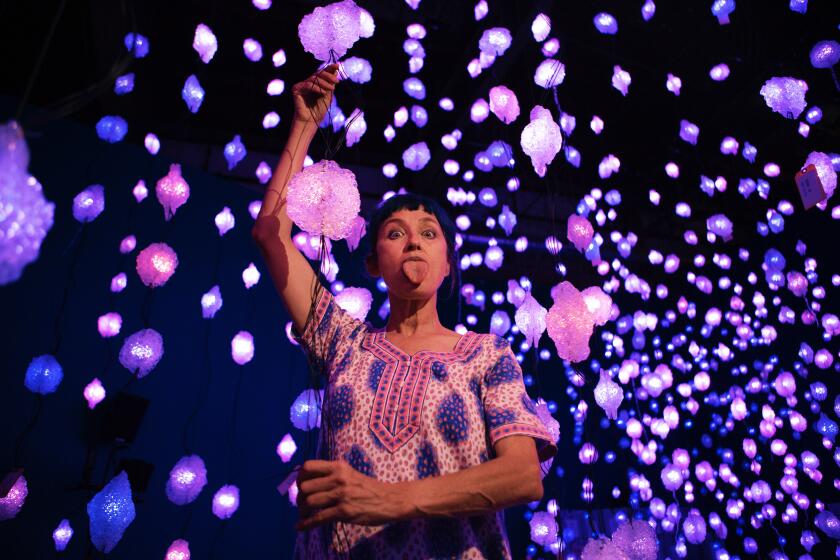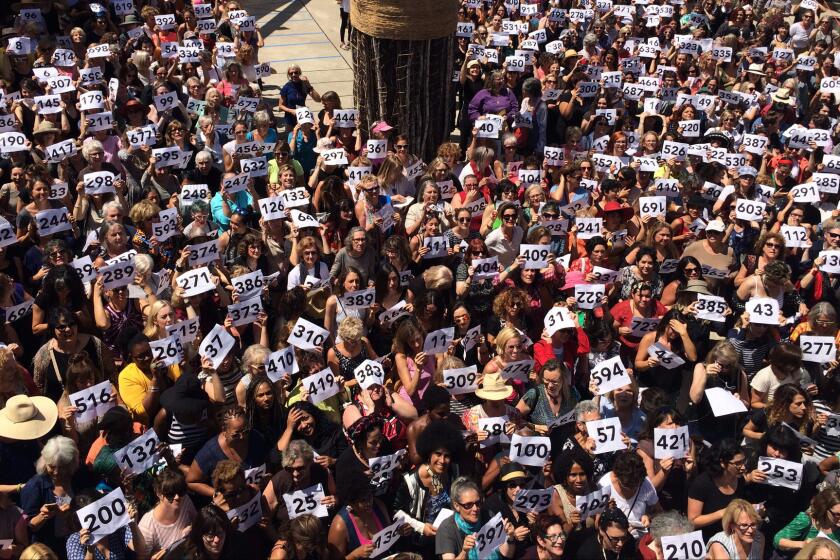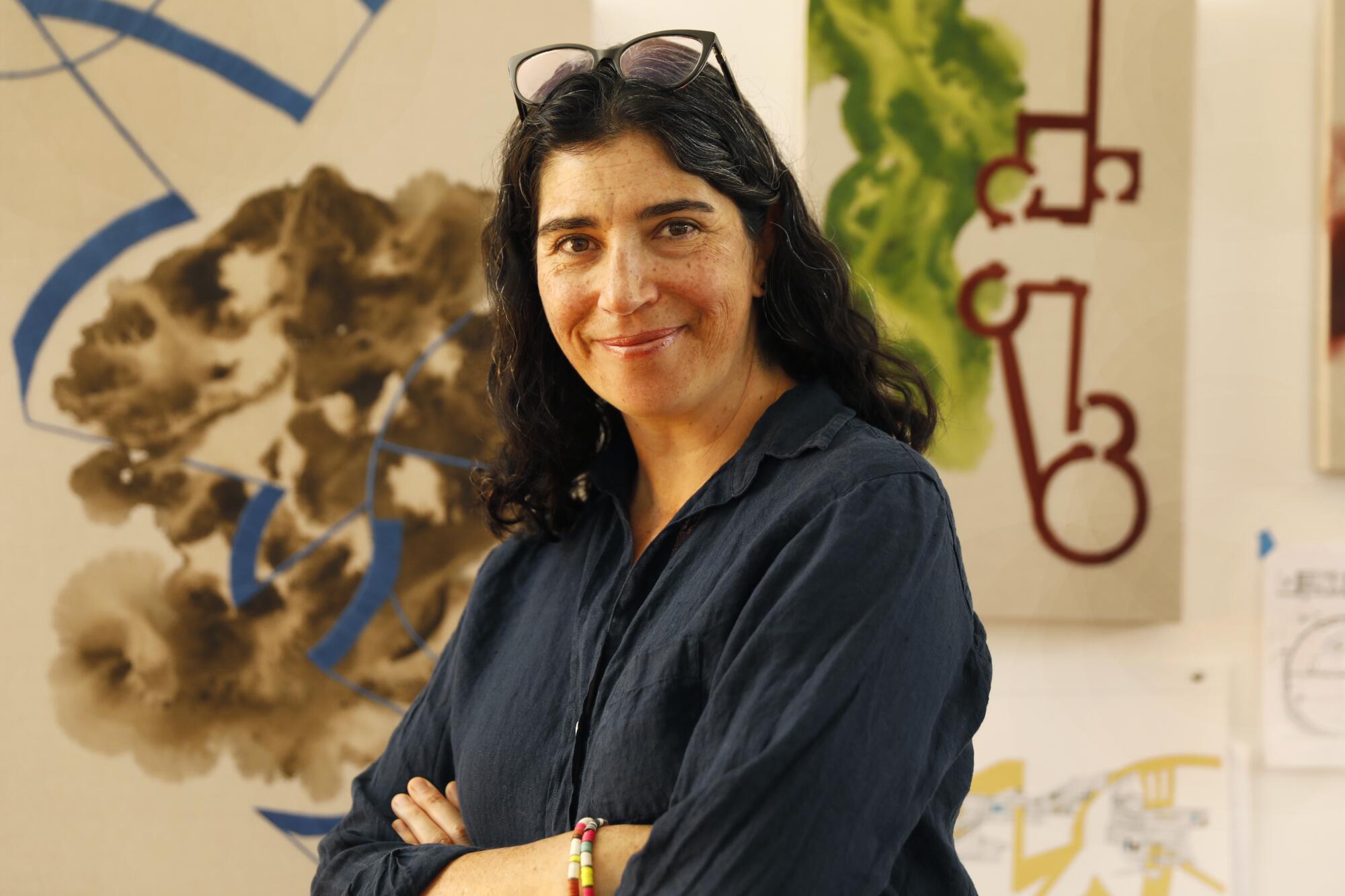
If walls could talk, the house known as E-1027 could write a bestseller.
Situated on the French Riviera, about a 30-minute drive east of Nice, the graceful 1929 villa was originally designed by architect Eileen Gray as a retreat for her and her lover, critic Jean Badovici. Over the course of its nearly century-long life, it has borne witness to one naked starchitect vandal, one world war, various drug-fueled orgies and a murder.
Los Angeles artist Kim Schoenstadt is obsessed with its story, not to mention its designer.
Born to an aristocratic Irish family in 1878, Gray spent much of her life in Paris where she made a name for herself as an interior and industrial designer. (She is perhaps best remembered for the creation of a circular adjustable table of tubular steel that is widely regarded as a classic and which remains in production to this day.) She also cut a one-of-a-kind figure around town. Gray was bisexual and some reports make note of her peregrinations around Paris with her lover, nightclub singer Damia (born Marie-Louise Damien), along with Damia’s beloved pet panther.
“She was never one thing,” Schoenstadt says of Gray. “She had the Jean Désert atelier [her interior design studio]. She made these ridiculous textiles and rugs. She designed this wonderful house.”

E-1027 was remarkable for various reasons. For one, Gray was a rare woman designer in a field dominated by men. Moreover, she was not a trained architect but produced a smart design that deployed the principles of International Style Modernism at a time when those principles were still new. E-1027 has a graceful, open-plan structure, set on pilotis, which takes full advantage of its Mediterranean views. The house so intrigued Swiss-French architect Le Corbusier that he longed to buy it.
But almost from the moment of its inception, E-1027 came under assault from forces that seemed intent on erasing aspects of Gray’s work.
In 1932, Gray split from Badovici and he kept the house. (He owned the land upon which it was built.) Le Corbusier, a regular guest, then proceeded to paint a series of eight Picasso-esque murals on the structure — while in the nude. The murals were in direct defiance of Gray’s wishes, who wanted the home’s original seafaring tones to be respected.
And that’s just for starters.
During World War II, the house was occupied by soldiers, its walls used for target practice — by Nazis or wine-drinking Italian fascists, depending on the account. After Badovici’s death in 1956, the house ended up in the hands of Marie-Louise Schelbert, a wealthy Swiss widow. After Schelbert died in the 1980s, her morphine-addicted physician Peter Kägi inherited E-1027. He sold off most of Gray’s original furnishings and used the house as a setting for drug-fueled orgies. That is, until 1996, when he was murdered during one tryst.
The Swiss artist’s sensuous videos inspired Beyoncé’s window smashing. Now Rist’s work is remaking the Frank Gehry-designed Geffen Contemporary at MOCA.
After that, the house slipped into disrepair and squatters moved in.
“It’s like a telenovela of architecture,” says Schoenstadt.
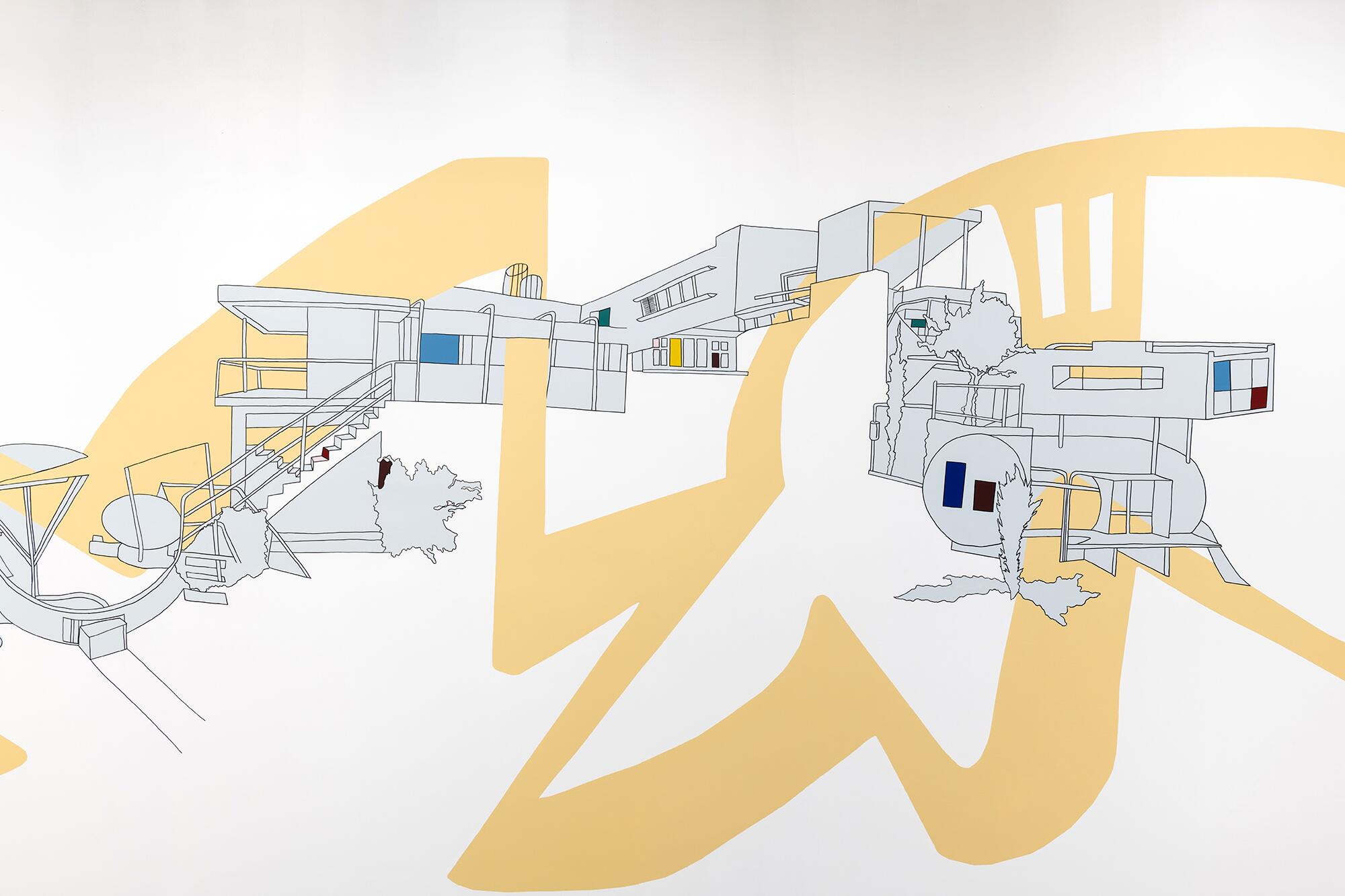
That telenovela inspired Schoenstadt’s solo exhibition, opening Thursday, at the Mullin Gallery at ArtCenter College of Design in Pasadena. “Enter Slowly, The Legacy of an Idea,” was inspired by the artist’s research into Gray’s life and designs, as well as the story of E-1027.
Schoenstadt has long engaged architecture in her work, producing wall drawings that mash up iconic buildings into fantastical architectonic arrangements, which bend and weave along a wall — often, in ways that defy gravity.
Some of her pieces have participatory elements. For “Exercise in Perspective #3,” an installation she produced for Chimento Contemporary at the 2018 Volta art fair in New York, viewers were invited to add to the piece by using bits of twine to extend lines of perspective from the drawing into three-dimensional space. The only rule, she says, was that “you could lift up, you could push down, you could intertwine, but you couldn’t remove someone’s perspective.”
By the end of the show, the piece contained a web of lines extending in all directions — a meditation on the different ways in which different people might perceive the same object.

After the Volta project, Schoenstadt wanted to do something that featured architecture by women. Cursory research led her to Gray’s work.
She quickly grew fascinated by the ways Gray’s designs were attuned to daily life. A writing desk features a place to hold a cup of tea. A mirror folds open to allow the viewer multiple angles on their head. A side table is designed to be placed at different angles — accommodating drinks or a book. “Everything had multiple functions,” says Schoenstadt. “It was built toward your impulse.”
Gray may have been a Modernist, but her designs were deeply humane. Le Corbusier described a house as “a machine for living”; Gray preferred to see “a dwelling as a living organism.” Of the Modernists, she once said, “Their desire for strict precision has made them neglect the beauty of all these forms; spheres, cylinders, undulating and zigzag lines, ellipsoidal lines that are like straight lines in movement. Their architecture has no soul.”
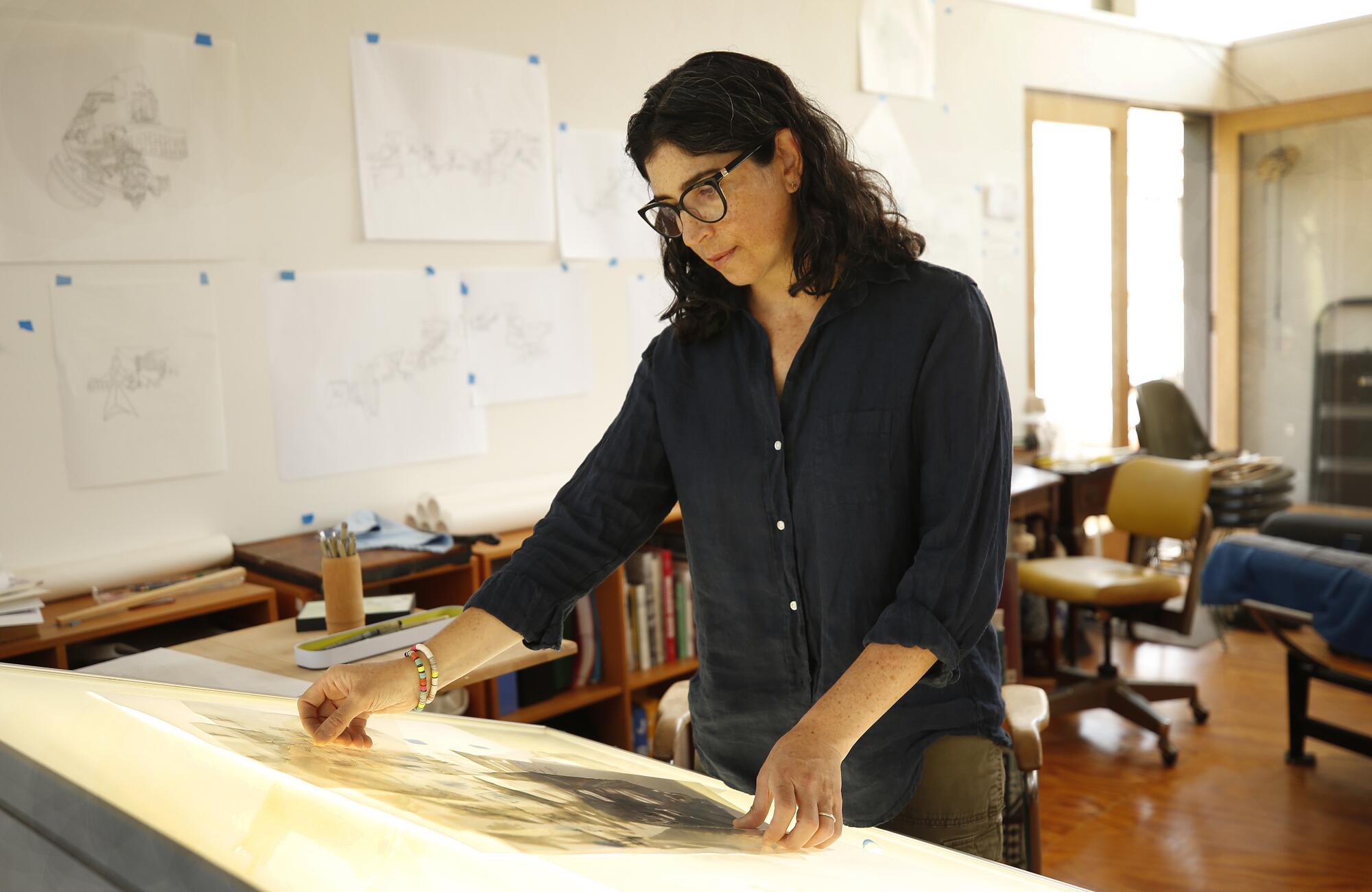
Schoenstadt was also intrigued by the ways in which Gray’s work — which had been celebrated in its day — fell into obscurity. An obscurity that, at times, was precipitated by men.
Le Corbusier not only painted murals all over Gray’s house against her will — later, when he published them, he misidentified her as “Helen Grey.” In another publication, he doesn’t name her at all. Architectural historian Beatriz Colomina has likened the act to a “dog peeing on street corners.”
There have been myriad other ways in which the details of her work were overwritten. In her research, Schoenstadt turned up a copy of the architectural drawings for the E-1027 house as they had been published in L’Architecture Vivante, the magazine edited by Badovici. Attached to the magazine is a typewritten note added by Gray: “The colours chosen for reproduction,” it reads, “have no relation to the reality.”
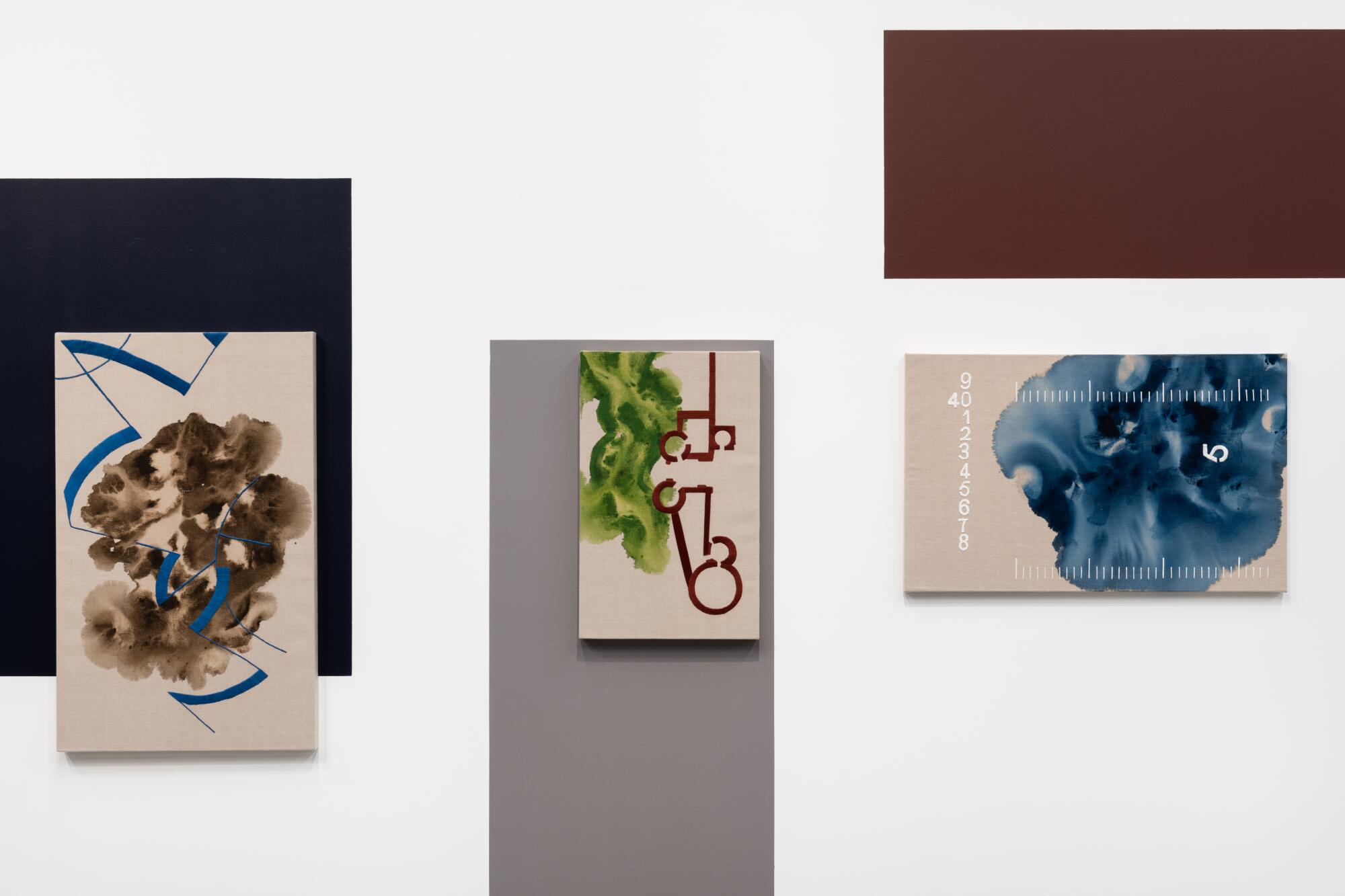
At the Mullin Gallery, Schoenstadt pays tribute to Gray’s work with a large-scale wall drawing, sculptural pieces inspired by some of E-1027’s custom furnishings, as well as a series of paintings the artist produced during the pandemic. Of particular note are the paintings inspired by Gray’s rug designs. These feature watery pools of color that seem to evanesce into nothing, topped by the hard geometries of Gray’s rug patterns, which are rendered in hand-stitched embroidery. (It’s a nice touch of craft associated with the labor of women.)
“These abstract shapes, these stains, it’s like when you drop dye into water and it’s suspended for a second and then it filters out,” says Schoenstadt. “That for me felt like the COVID moment, but it also felt like [Gray’s] life. She would go and do a thing and it would be great for this one moment and then it would kind of collapse. Something would make sense and work for two or three years and then, poof, it’d be gone.”
Every moment of her life, whatever she would turn her attention to, it was full force.
— Kim Schoenstadt on Eileen Gray
The show represents a dialogue between artists through time. (Gray died in 1976, at the age of 98.) It’s “this kind of collaborative dance in absentia with another person,” says co-curator Christina Valentine, deputy director of exhibitions at ArtCenter. Schoenstadt’s “exhibition isn’t just highlighting Eileen Gray, she is making work alongside Eileen Gray.”
Within the context of an art school, the exhibition also serves as a way to reflect on what gets written into history and what gets left out.
“Gray wasn’t forgotten, but the way she was written about and the way her work was dismissed — that’s an important discussion to have with students,” says Julie Joyce, who served as co-curator of the show and is currently interim vice president of exhibitions at ArtCenter.
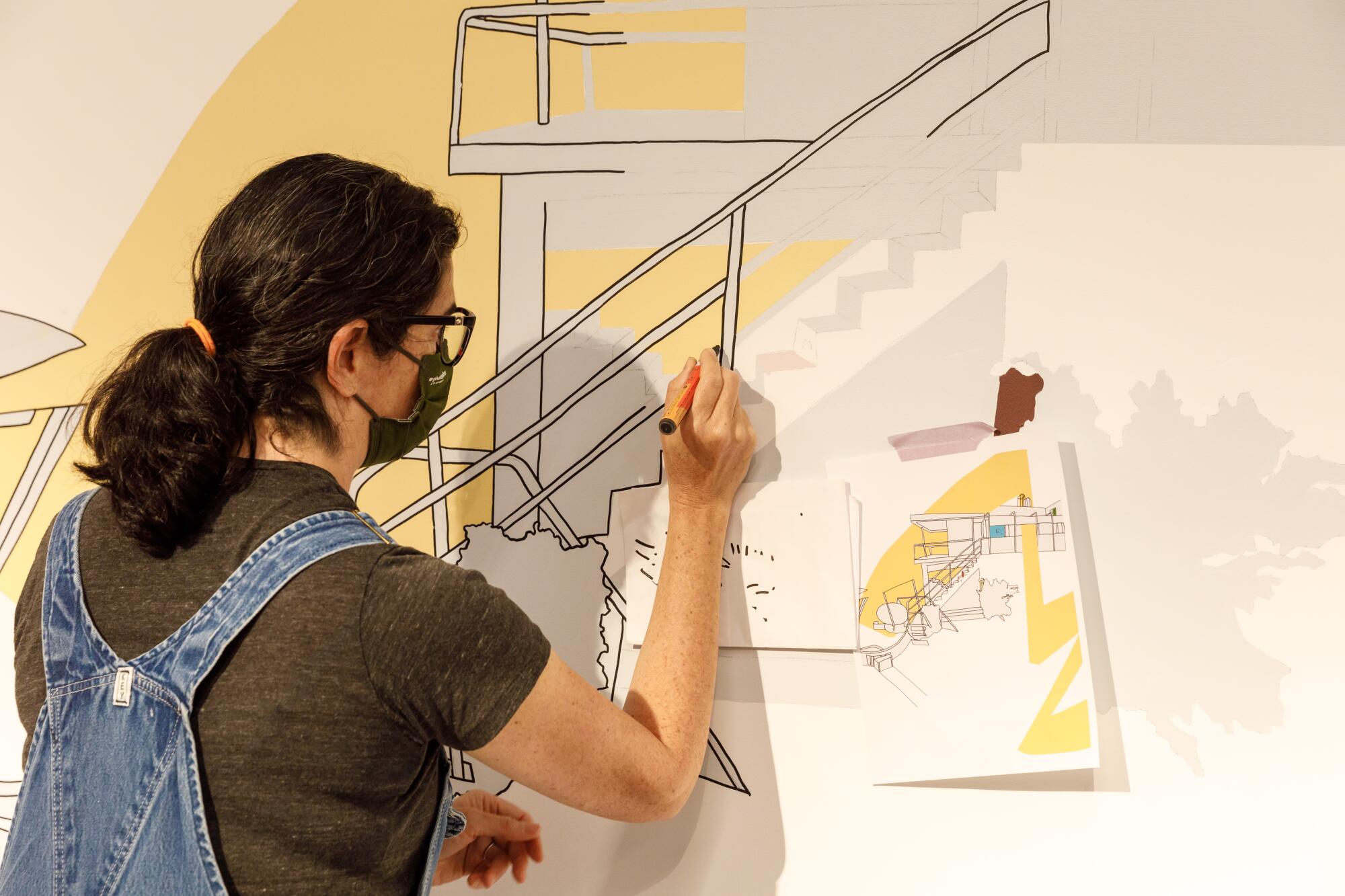
After E-1027, Gray went on to build two other houses, after which she withdrew from design circles. At one point, she burned many of her diaries and letters. But she was alive long enough to be able to enjoy a revival of her work. In 1965, the architectural historian Joseph Rykwert chanced upon a meeting with Gray through a friend and two years later published an essay about her work in the Italian design magazine Domus.
This sparked institutional interest. By the 1970s, some of her furniture designs went back into production. In 1980, she was the subject of a posthumous retrospective at New York’s Museum of Modern Art. Other museum shows have since followed.
In the late 1990s, the French government acquired E-1027. (Ironically, to preserve Le Corbusier’s paintings.) More than half a dozen years ago, the Cap Moderne Assn. helped raise the necessary funds to restore the house, if not to its original state, then as close to it as possible. Today it is a site of architectural pilgrimage, along with the Cabanon, a nearby home designed by Le Corbusier.
Schoenstadt is not the first person to be intrigued by Gray’s unusual life story. The designer was the subject of a 2014 documentary about her life, “Gray Matters,” directed by Marco Orsini. That same year, she was the subject of a feature film by Irish filmmaker Mary McGuckian, titled “The Price of Desire.” Irish actress Orla Brady played Gray; Alanis Morissette played Damia. (Variety described it as “tedious.”) In 2019, Charlotte Malterre-Barthes and Zosia Dzierzawska published a graphic novel about the designer, “Eileen Gray: A House Under the Sun.”
For artist Kim Schoenstadt, it began as a simple idea: Bring together a group of female artists from around Los Angeles for a group portrait — a way of recognizing the presence of women in a field that remains dominated by men.
In Gray’s story, Schoenstadt finds some important lessons.
“Every moment of her life, whatever she would turn her attention to, it was full force,” she says. “She gave up on external validation and, as a midcareer artist, that is fantastically important. I’m a midcareer female artist. It’s like, hang on. Go and walk your path. Be true to your ideas.”
Gray is speaking. And this time she is being heard.
Kim Schoenstadt: Enter Slowly, The Legacy of an Idea
Where: Mullin Gallery, 1111 S. Arroyo Pkwy., Pasadena
When: Opens Sept. 23 and runs through Feb. 27, 2022
Admission: Visits are by advance reservation only and can be scheduled via email at exhibitions@artcenter.edu
Info: artcenter.edu
More to Read
The biggest entertainment stories
Get our big stories about Hollywood, film, television, music, arts, culture and more right in your inbox as soon as they publish.
You may occasionally receive promotional content from the Los Angeles Times.
